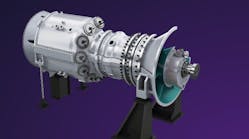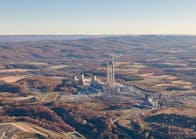One of the most memorable scenes in the 1960s film classic, “The Graduate” is when one of his parents’ well-meaning friends takes Benjamin Braddock aside for advice on where to go with his post-campus career.
“One word, just one word,” the businessman and parental friend soberly intones to Benjamin. “Plastics.”
The scene is now considered iconic and ironic in the context of the generation gap, but in the real world of nearly 60 years ago it sounded like boring but undeniable necessity. Ben Braddock, as played by Dustin Hoffman in a star making turn, was confused and fearful about life after college, and plastics were the brave new world of packaging.
Contrary to its current pariah environmental reputation, at one point in recent history plastics were well regarded as an alternative to cutting down countless trees to make paper packaging. It was another way to use chemistry and manufacturing to utilize every part of the barrel of oil.
Alas, those innocent polymer days of yore are no longer true, and almost certainly they never were. Plastic waste, from wrappers to bottles, is considered both carcinogenic and a threat to both visual and environmental purity of the land from parks to ocean tides.
Plastic pollution is rampant globally, with the National Geographic estimating that eight million tons of plastic waste enters the ocean every year. Factor in the greenhouse gas impact of polymer production and you have a real sticking point for commercial and industrial firms that want to truly decarbonize.
The goal is utilizing every tool in the decarbonization shed to achieve paths to net zero emissions as well as eliminate the type of garbage that will not biodegrade in this century. Thus, potential good news comes out of the chemistry lab at the University of California at Berkeley, according to a school release that says a catalytic process can vaporize plastics and turn them into new hydrocarbon blocks for future products.
"We have an enormous amount of polyethylene and polypropylene in everyday objects, from lunch bags to laundry soap bottles to milk jugs — so much of what's around us is made of these polyolefins," said John Hartwig, the UC Berkeley chemistry professor who led the research, as quoted in a university release. "What we can now do, in principle, is take those objects and bring them back to the starting monomer by chemical reactions we've devised that cleave the typically stable carbon-carbon bonds. By doing so, we've come closer than anyone to giving the same kind of circularity to polyethylene and polypropylene that you have for polyester in water bottles."
The experimental project confirmed by UC-Berkeley’s School of Chemical Engineering involves a catalytic process that focuses most effectively on two common types of plastic waste: polyethylene and polypropylene. The former is used in single-use plastic bags, while the latter is harder plastic from dishes to luggage, and the school release says it not only vaporizes but can also degrade a mix of polyethylene and polypropylene.
The catalytic process, developed at the University of California, Berkeley, works equally well with the two dominant types of post-consumer plastic waste: polyethylene, the component of most single-use plastic bags; and polypropylene, the stuff of hard plastics, from microwavable dishes to luggage. It also efficiently degrades a mix of these types of plastics.
So maybe here’s the real future:” Plastics recycling.”





